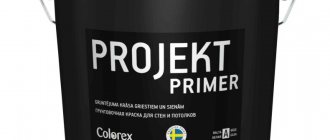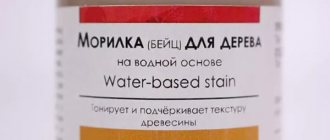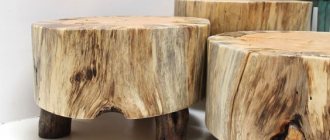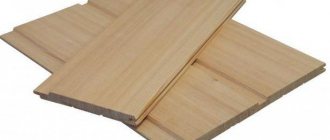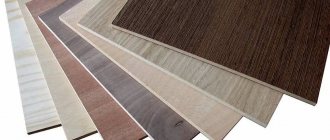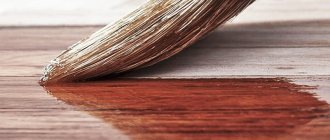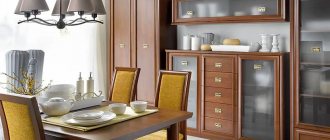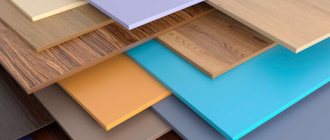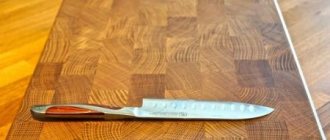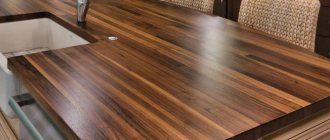Articles
All photos from the article
Wood is an excellent construction and finishing material. But unfortunately, lumber is characterized by high porosity, which negatively affects strength. To eliminate this drawback, wood glaze is used for exterior work.
In this article we will talk about what azure is, what its composition is and what are the features of its application. The topic of the article is of particular interest, since more and more individual residential buildings are being built from wood everywhere.
Surface treated with acrylic impregnation
Sooner or later, the question arises of extending the life of objects built from lumber, and in this case, glazing on wood is an effective solution to the problem. Moreover, the use of such products for their intended purpose allows not only to strengthen the wood, but also to significantly improve its appearance.
Why do you need azure?
By azure we mean a glazing composition that strengthens the surface without changing the original structure of the material. It is designed to extend the life of wood products and objects built from lumber. In addition, it is needed to improve the appearance of wood.
Glazing compounds have an antiseptic effect, strengthen wood and improve appearance
Azure has an antiseptic effect, therefore it prevents the appearance of fungus, the infestation of wood-boring beetles, and the formation of unpleasant blue discoloration. The composition has proven itself especially well in relation to soft wood, which in its natural form does not last long and requires the mandatory application of a protective coating. Impregnation penetrates into the deep layers of the material, strengthens the fibers, making them less susceptible to aging and cracking.
The use of glazing compounds prevents damage to construction projects from ultraviolet radiation and precipitation. Some types of glaze are called “filmless impregnations”, because after treatment the vapor permeability of wood remains at the same level, but excess moisture evaporates, and the microclimate in the room improves.
Thus, the use of azure in the processing of timber, logs, and boards makes it possible to protect them from negative damaging factors, while any material becomes stronger, more attractive, and more durable.
Rules for choosing compositions
Natural wood as a material is incredibly impressive. This may be why many owners of country houses use glazing compounds - glazes and impregnations - instead of opaque paints. They give the surface the desired shade and preserve, and sometimes emphasize, the characteristic texture.
How to choose the right shade of glazing composition is not an idle question. In addition to paint, the color of the wood also affects the final result. The same coating on pine will be lighter than, for example, on larch. The absorbency and resin content of the wood, as well as the method of its processing, contribute. Thus, the coating consumption on a planed and chopped surface is noticeably less (sometimes 2 times) than on a sawn surface. The latter absorbs more paint, which naturally affects the color. The result will be quite expected if you make test paints on cladding boards, logs left over from construction, etc.
Don't forget about the practicality of finishing. The facade of a house located near a busy road will quickly become covered with a layer of dust and soot. Therefore, it is better to choose soft shades for it: brown, gray, on which dirt will be less noticeable. At the same time, the coating of dark shades on the sunny side gradually fades and becomes dull.
On our market, glazing compounds for wood are represented by the following companies: Akzo Nobel (Pinotex trademark), Belinka, Caparol, Meffert, Benjamin Moore & Co, Teknos, Tikkurila, Rogneda. The price of their products starts at 400 rubles/l.
Types of glaze for wood
Depending on the base, wood glaze can be water-based, oil-based or solvent-based. The characteristics of different types of impregnations are as follows:
- Aquatic. Water acts as a solvent in them. The composition also includes light-resistant pigments, biocidal substances, and acrylic in the form of a dispersion. Lazuli penetrates wood perfectly (the penetrating ability is the highest among all means). They provide long-term protection from negative influences, are safe for human health, and are suitable for use in any premises, even in children's rooms, baths, and saunas. Due to long-term storage, sediment may form at the bottom of the azure, but to restore its properties, simply shake the bottle.
- On solvents. Such compositions are most resistant to weather changes, precipitation, and provide a high degree of protection against UV radiation. Due to the presence of organic solvents or alkyd varnish, toxic substances evaporate before the glaze is completely dry, so they are usually used for outdoor work. The impregnations of this group include special persistent pigments that beautifully highlight the structure of the wood.
- Oily. They are multicomponent compositions based on castor, flaxseed, sunflower, orange oil, rosin ester, and vegetable alcohols. Such glazes prevent the appearance of fungus, prevent yellowing and blueing of the wood, and favorably emphasize the structure of the fibers. Many oil products are colorless, while others contain various pigments to add a richer tone to wood products.
Based on consistency and degree of fluidity, all glaze compositions are divided into the following groups:
- Thin-layer (liquid-flowing). Quickly and deeply penetrate between wood fibers, giving it a liquid texture. Due to strong absorption, a characteristic film does not form on the surface of lumber. Such glazes are ideal for elements that are not resistant to deformation (lining, picket fence), as well as for products with complex shapes.
- Medium-layer (intermediate). They have a higher density, harden on the surface in the form of a thin film, since they penetrate less well into the porous structure of the base material. However, these impregnations better protect the wood from the negative effects of the external environment. They are well suited for structures that undergo slight deformation during operation (various frames, beams).
- Thick-layer (thick-flowing). After drying, a durable film is formed on the surface of the wood. They are used only on products that are not subject to deformation (door blocks, interior finishing elements - block house, imitation timber), and are also excellent for protecting facades and structures outside buildings.
Azure for interior decoration
Glazing compounds for work inside buildings and structures can be used on new and old wood, previously cleaned of paint and varnish coatings. Most often they are applied to:
- window frames;
- door jambs;
- floor;
- ceiling beams;
- railings, staircase steps;
- Wall panels;
- furniture;
- decor
Such glazes are suitable not only for natural wood, but also for MDF, plywood, chipboard, and veneer. Most often they are water-based and contain waxes and resins that give the wood a varnished appearance. Impregnations for interior work help hide minor defects in the base, preserve the natural appearance of wood and emphasize its beauty. Color pigments are often added to the compositions, providing the material with even greater decorative properties. Some azures have a special purpose - due to their environmental friendliness, they are used to cover children's furniture, toys and even dishes.
Azure for exterior use
Such impregnations are created on the basis of alkyd resins and solvents and contain oils and natural waxes. The finished coating will be durable and protect the wood surface from ultraviolet radiation, precipitation, and temperature changes. The highest quality glazes guarantee protection for up to 10-25 years. Most azures for exterior use contain pigments, since they are used to process fences, building facades and serve as a finishing (decorative) layer.
The main types of azures from Dufay
The Meffert AG Farbwerke concern produces the following types of wood glazes:
- LAZUR FOR WOOD (HOLZLASUR) is the simplest transparent paint for wood. Contains many protective components, has a light tinting effect, and is intended for treating wooden structures both outside and inside. It is quickly absorbed, practically does not change the color of the wood, but highlights its texture very well. If you cover a painted wooden surface with this glaze, the base color will become a little lighter.
- DECORATIVE AZUR (HOLZVEREDLUNG) – an improved version of the previous paint. Its main difference is gloss. Thanks to this, the paint has a more saturated shade, emphasizing the texture of the wood to a greater extent.
- GLAZE FOR WINDOWS AND DOORS (FENSTER UND TURENLASUR) is a tinted transparent paint that gives wooden windows and doors the noble appearance of valuable species and at the same time protects them from all possible negative influences.
- LAZUR FOR WOODEN FENCES (HOLZZAUN-LASUR) is a tinted, especially durable and dense paint that can penetrate deep into the wood, creating a protective layer on its surface from dirt, water, fungi and mold. Glaze for fences can also be applied indoors. It is very well suited for decorating furniture made of natural wood.
- LAZURDLASTENDDUFA (EFFEKTDESIGNWANDLASUR) – intended for a transparent coating on top of decorative plasters or on top of the base paint layer on wallpaper for painting. Creates the impression of volume, harmony and completeness. Allows the addition of sparkles and contrasting coloring particles.
- LAZUR 3-D-BRILLANT (WANDLASUR 3DBRILLANT) – used for the same purposes as the previous glaze, but it already contains pigmented particles that give the surfaces a three-dimensional appearance. Used as an independent coating when working with decorative plasters or as a finishing coating when working with non-woven wallpaper for painting.
Which is better: glaze or oil for wood?
For protection and decoration, wood is equally often coated with both glazes and oils. The effectiveness of use is high for both types of products, but the results will be different. The main feature of azure is the creation of a beautiful glossy film. Oil, on the contrary, after absorption gives the surface a more matte appearance, so you should purchase it for wood processing if you want to achieve just such an effect.
Oil-based glaze will give wood a semi-gloss shine, while solvent-based impregnation will give it a glossy shine. Such compositions have a high degree of decorativeness and give even an old structure an attractive appearance. In addition, glossy azures always create a durable protective film, so they do an excellent job not only with aesthetic, but also with practical functions. It is more advisable to use glazes for products with unevenness and defects - they hide such imperfections, masking them behind radiance and smoothness.
Protective impregnations for wood
The final stage of finishing work on a wooden structure is to protect the wood from the destructive effects of the environment. Modern penetrating impregnations, which include various glazes, more effectively preserve wooden surfaces.
A distinctive feature of glazed wood impregnation is its silky-matte, scratch-resistant and sun-resistant coating on any wooden surface. To impregnate a wooden surface with glaze, no preliminary priming or finishing coat with paint or varnish is required.
Preparing the surface for impregnation
For a beautiful and high-quality application of impregnation, the base must be well prepared. Only in this case will the applied coating really last for many years. The method of processing wood depends on its age, condition, strength and type of structure:
- strong wood with old paintwork can be processed using a sandblasting machine or cleaned with a scraper or wire brush;
- It is recommended to wash new wood or contaminated material with water under pressure;
- carved items, patterned shutters, railings, fences should be cleaned with a grinding machine with a special attachment;
- materials with chips and cracks must be puttied with suitable mastic;
- wood with old glaze must be treated with a special etching compound to remove the coating;
- stains from pens, felt-tip pens, and other difficult-to-remove marks can be removed with aerosol chlorine-free solvents, ammonia, methyl alcohol, or by sanding.
After any type of pre-treatment, the base must be well polished with a machine or sandpaper to get rid of burrs and irregularities. Afterwards, the wood is wiped with alcohol, turpentine, and allowed to dry completely.
Interesting qualities
What additional properties may be of interest to discerning buyers? For example, the self-cleaning effect of a painted surface. Pinotex Extreme blue (Akzo Nobel) has it. It contains colloidal silicon dioxide. We often use this substance (in the form of a powder of tiny grains of sand-crystals) as an absorbent for poisoning. Due to the porous structure and mass less than that of paint particles, silicon dioxide fractions accumulate at the very top of the paint layer. Water is absorbed by it, penetrates under the dirt particles, after which the swollen dirt is easily washed off by rain. Moreover, moisture occurs only in the upper layers of the coating, and the wood remains protected for up to 12 years.
The glazing antiseptic “Aquatex Provence” (“Rogneda”) has a similar self-cleaning effect. Thanks to its high wax content, it forms a dirt- and water-repellent coating. Water is not absorbed by the surface and does not remain on it, but, rolling down, captures particles of dust and dirt.
Features of applying oil impregnation
Working with such materials is not difficult, the main thing is to strictly follow the manufacturer’s instructions. After finishing the preparatory stage, dry the wood well. This is especially important if the material is still raw and new. Areas where resin is released are treated with white spirit using a piece of cloth.
The azure is prepared for work by mixing it well in a jar (the mass must be absolutely homogeneous in consistency). Then the impregnation is applied with a brush, roller, or a spray bottle is used on large areas. Apply 1 or 2-3 layers with a period of time that is enough for the previous layer to dry. To dilute oil glaze, you cannot use organic solvents; they are diluted only with oil or alcohol.
The best way to figure out which wood product you need
And now you need to process some kind of wooden surface. It’s easy to get confused in the offers, because different manufacturers often offer completely different compositions under the same name.
A simple rule will help you choose a product for wood: think about exactly what qualities you need to give to your specific wooden product or structure. If your wood product (or set of products) does not provide any function, it is a bad product.
What is a good product for outdoor wood?
What is important for a structure that will stand in the open air? Let's say it's a wooden bench, a gazebo, the facade of a house or a fence. To make a tree last a long time outdoors, you need:
- protect it from natural phenomena: always from ultraviolet radiation and moisture - the main factors that destroy the structure of wood;
- protect the tree from fungi (mold) and from certain insects that live in the tree;
- give the wood a beautiful appearance and color that will last as long as possible.
Which wood product is best to use in the house?
What qualities are important for preserving the wood of an interior door, a piece of furniture or lining that covers the kitchen walls? We need:
- Of course, a beautiful appearance and the ability to repaint, for example, a pine surface into fashionable rosewood;
- Safety, because no one wants to inhale substances harmful to health;
- Protection from moisture if wood is used in the bathroom or kitchen;
- Protection against fungi that will certainly appear under the influence of moisture;
- Harmony in the home - more and more often, psychologists and designers, in order to maintain a sense of peace and comfort, advise not to use shiny glossy surfaces in interiors (the advice is controversial, but still matte azures and paints look nicer in the house).
Conclusion: choose a product for wood based on its functions, not on its name.
Solvent-based glaze application
The procedure for preparing the surface will be similar to that described above. Be sure to sand the wood - this will help not only level the material, but also open its pores. You cannot apply glaze to products that have been previously painted or impregnated with other glazing compounds - first the coating is removed mechanically or chemically.
Solvent-based glazes almost never require dilution and usually have an optimal consistency. Excessive addition of thinner can ruin the composition! Work is carried out at temperatures above +5 degrees in the absence of bright sun, so it is best to paint wood in the early hours in summer or autumn. The glaze is applied with a roller or brush, unevenly painted areas are wiped with white spirit, and then treated again.
What threatens wood trim on the street?
First of all - moisture. Fluctuations in humidity provoke wood movement (swelling and shrinkage), as a result of which internal stresses appear. In addition, with high air humidity, colonies of mold and fungi actively multiply, which can damage the wood structure.
No less harmful are the effects of UV rays, temperature changes, and the accumulation of dust and dirt, from which the wood becomes coarser and loses strength. Therefore, manufacturers of paints and varnishes advise that after construction is completed, they immediately begin its protective and decorative treatment. The fact is that the further this process is delayed, the more contaminated and weakened the wooden surface will be and the worse the paint adhesion and the quality of the finished coating will be. This means that its periodic updating will have to be carried out more often, and it will cost more.
Color variety of azure
There are various impregnations on sale that can enhance the natural color of wood or change it, for example, making inexpensive types of wood more noble. The shade of the coating can vary depending on the tone of the product itself, its density, and service life. In order not to make a mistake with your choice, it is recommended to first test the impregnation in a small, inconspicuous area, and only then proceed to the main stage of work.
The most popular and fashionable are light tones of azure - lightened, bleached shades of wood. You can even apply a transparent glaze to the base, but this does not always give the desired result. It is better to buy impregnation with the addition of special pigments or purchase bleaching glazes - products that lighten wood that is too dark. Typically, the lightest glazes are less resistant to ultraviolet radiation, so additional protective compounds must be applied over them.
Azure for wood. Standard colors
Manufacturers produce glazing compounds in a variety of tones. For example, the colors of Belinka brand impregnations include walnut, oak, pine, teak, larch and many other wood-like shades. Some glazes have a gray or beige tint and are used on old wood to visually renew it. You can change the tone yourself by adding gold, silver or colored pigment to the composition. The variety of colors, interesting visual effect, practicality and ease of use make azure incredibly popular among professionals and for home use.
Belinka glazes are the best of all impregnations! That's why
Belinka wood glazes – what makes them unique? How do they differ from other impregnations? We continue meetings with the company’s chief technologist Valery Ermakov.
Today we will talk about decorative azure coatings for wood. They name translucent paints for wood with protective functions - impregnations, glazes, stains, and antiseptics. These concepts are vague and often confusing, so let’s immediately define the term.
Belinka glazes are the best of all impregnations! That's why
Belinka wood glazes – what makes them unique? How do they differ from other impregnations? We continue meetings with the company’s chief technologist Valery Ermakov.
Today we will talk about decorative azure coatings for wood. They name translucent paints for wood with protective functions - impregnations, glazes, stains, and antiseptics. These concepts are vague and often confusing, so let’s immediately define the term.
What is wood glaze
Azure is a decorative translucent colored coating that preserves the structure of wood visible and protects it from harmful influences (atmospheric and mechanical).
So, with the help of glaze you can give the wood color so that the natural pattern of the wood is preserved, “the wood is visible”, and you can also protect the wood from mechanical influences, and if the wood is used outdoors, then from moisture (steam, rain and snow) , as well as from ultraviolet radiation (sun).
Why Belinka glazes are better than analogues. Unique properties
Dealers and sellers of Belinka products have repeatedly said that there is not even a need to advise and praise this brand: in stores, people silently approach the Belinka stand and take the desired can. The secret is simple: anyone who has at least once tried to work with these wood products and seen the result not only remains loyal to Belinka, but also recommends these materials to all their friends.
1. Durability of 10 years - proven by research!
All manufacturers love to talk about warranty periods, and the most incredible numbers are quoted. But very few people can back up their words with a document – but Belinka can.
We do not promise you durability of 50 or even 25 years, because no impregnation can withstand that much. But we are proud to say that studies conducted by an independent laboratory have confirmed the durability of the Belinka Base + Belinka Toplasur complex - 10 years. If you want to check, request test reports, we will be happy to provide them.
2. Safety: all Belinka glazes are approved for interior work!
We have more than once encountered the fact that the “analogs” of our azure coatings, which people buy for use inside the house, are in fact exclusively for exterior use, as they contain evaporated substances that are harmful to health. And it’s more profitable for sellers to “forget” to warn you about the danger.
As for Belinka, our glazes are absolutely safe, both for interior and exterior use! You can easily coat wooden walls or a door in a room with Toplasur as an “external” product. According to the documents, nothing harmful was found in it.
In fact, Belinka does not write on the can that TopLasur can be used for indoor use, not based on functional or environmental features, but only in connection with decorative qualities. It’s just that TopLasur creates a slightly shiny semi-gloss finish, while Belinka adheres to the principle of environmental friendliness in the decorative aspect: today designers and psychologists recommend that calm, matte surfaces prevail in the interior - this is more pleasing to the eye, and psychologically you feel more comfortable at home. But if you like shiny surfaces, please use them!
